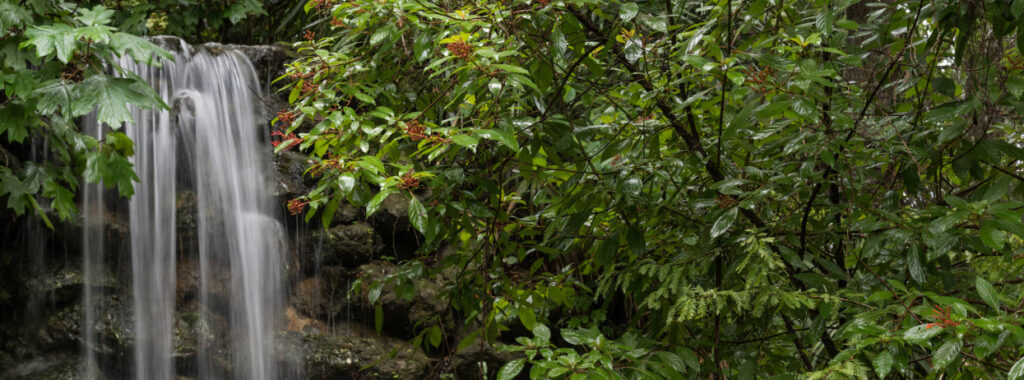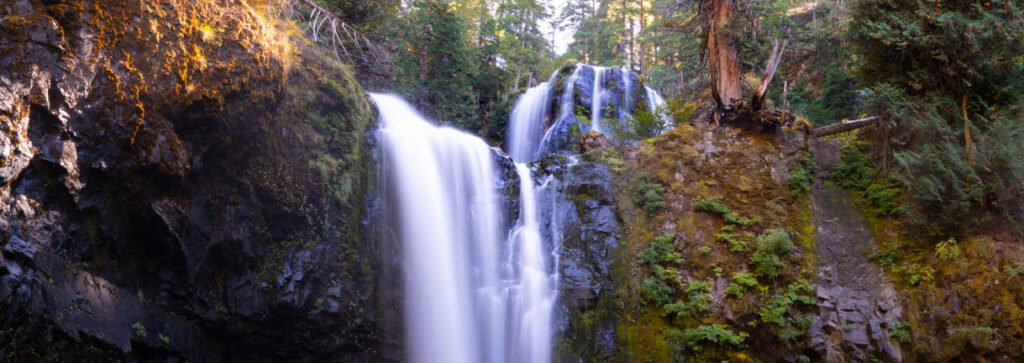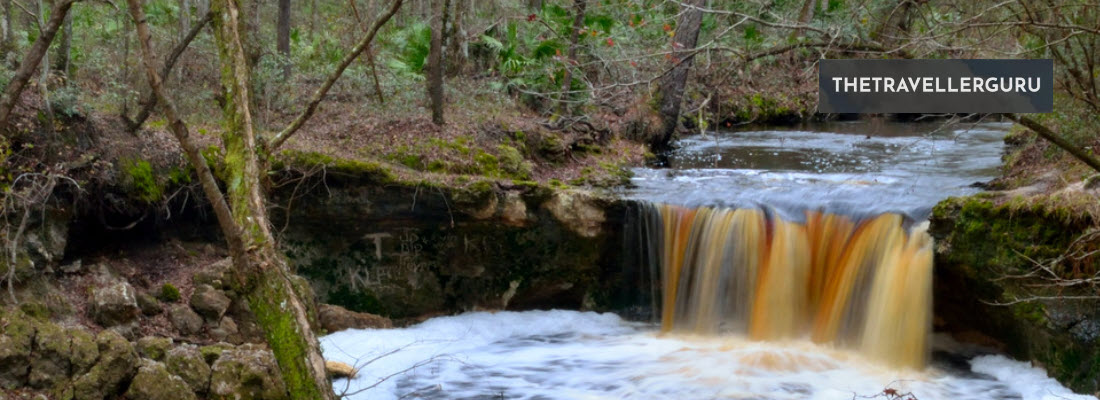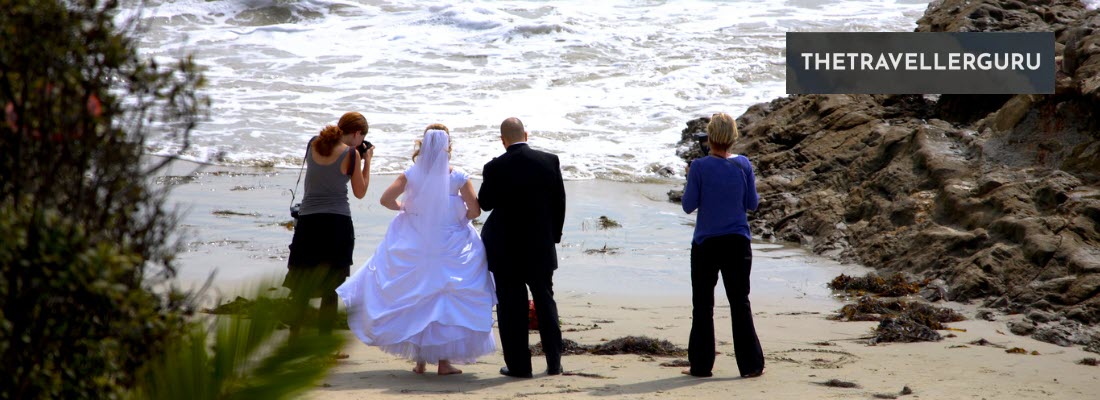Hey there my fellow travel enthusiasts and welcome to my post where we will check out the 7 best waterfalls in Florida. Now, though Florida’s geography doesn’t lend itself to the high mountain falls found in other states, it does feature unique and picturesque waterfalls, each with its own charm.
While exploring these waterfalls you’ll find that they provide more than just a scenic backdrop; they offer a serene escape and a chance to connect with Florida’s diverse ecology. Whether you’re looking to witness the sheer size of Falling Waters or prefer the tranquil ambiance of Rainbow Springs, Florida’s waterfalls are hidden gems that beckon exploration.
- Falling Waters State Park
- Big Shoals State Park
- Morikami Japanese Gardens
- Rainbow Springs State Park
- Devil’s Millhopper Geological State Park
- Falling Creek Falls
- Steinhatchee Falls
Map of Florida’s Best Waterfalls
Use this map to identify the locations of the waterfalls listed in the post below.
Best Waterfalls in Florida
Florida’s waterfalls offer a unique spectacle within its diverse natural landscapes. As you explore these sites, you’ll encounter the tranquility of cascading waters framed by lush state parks and the enthralling connection between Florida’s springs and their resulting waterfalls. Let’s check them out:
1. Falling Waters State Park
Falling Waters State Park, nestled in Chipley, Florida, is a remarkable natural attraction renowned for housing the state’s tallest waterfall. This park is not just a testament to Florida’s diverse natural beauty but also a place where geological wonders meet historical intrigue.
The park’s centerpiece, a majestic waterfall, cascades 73 feet down into a deep, ancient sinkhole, a geological formation that adds to the mystery and allure of the site.
Specifications and Access:
- Height of the Waterfall: The waterfall at Falling Waters State Park is the highest in Florida, with a drop of 73 feet. This impressive height is particularly notable given Florida’s generally flat terrain.
- The Sinkhole: The waterfall plunges into a massive sinkhole that is about 100 feet deep and 20 feet wide. The onflow of the water after it disappears into the sinkhole remains unknown, adding a sense of mystery to the park.
- Geological Features: The sinkhole and waterfall were formed by acidic rainwater eroding the limestone bedrock, a common geological process in Florida but rarely resulting in such a dramatic feature.
- Access to the Waterfall: Visitors can enjoy the waterfall via several boardwalks and viewing platforms, providing different perspectives of this natural wonder. The park offers a two-mile hike that leads to the waterfall, allowing visitors to immerse themselves in the lush surroundings.
- Additional Attractions: Beyond the waterfall, the park is a haven for nature lovers, featuring a butterfly garden, opportunities for swimming and a tropical ambiance that characterizes much of the state park.
- Location and Facilities: Falling Waters State Park is located at 1130 State Park Rd, Chipley, FL 32428. The park is equipped with amenities such as picnic areas and playgrounds, making it a family-friendly destination.
Falling Waters State Park is a unique destination in Florida, offering visitors a chance to witness a rare natural phenomenon. Its combination of the highest waterfall in the state, a mysterious sinkhole and a rich natural environment makes it a must-visit location for nature enthusiasts and anyone interested in the diverse landscapes of Florida.
2. Big Shoals State Park
Big Shoals State Park, located near White Springs in Florida, stands out as a unique natural playground for adventure enthusiasts and nature lovers alike. And whilst technically nit a traditional waterfall as such, this state park is distinguished by its remarkable feature: the largest whitewater rapids in Florida.
Offering a rare and exhilarating experience in a state not typically known for its rapids, Big Shoals State Park attracts kayakers, canoeists and those seeking the thrill of navigating Class III whitewater challenges. Beyond the rapids, the park’s scenic beauty, encompassing towering bluffs and diverse wildlife, makes it a captivating destination for outdoor activities.
Specifications and Access:
- Whitewater Rapids: The park is famous for its whitewater rapids, which are the most significant in Florida. The rapids are classified as Class III, providing a challenging and exciting experience for experienced paddlers.
- Water Level Considerations: The accessibility of the canoe and kayak launches depends on the water level. They are closed when the water level is above 62 feet, so visitors are advised to check conditions in advance.
- Hiking and Biking Trails: For those who prefer land-based adventures, Big Shoals State Park offers 28 miles of forested trails ideal for hiking, biking and even horseback riding. These trails provide stunning views of the bluffs that rise 80 feet above the river.
- Location and Facilities: The park is located at 11330 SE Co Rd 135, White Springs, FL 32096. It is well-equipped with facilities for a comfortable visit, including picnic areas and restrooms.
- Natural Scenery: The park’s landscape is characterized by its natural beauty including the river, bluffs and a variety of flora and fauna, making it a perfect spot for nature photography and bird watching.
- Access to the Rapids: Access to the rapids is subject to safety considerations, and visitors are encouraged to have appropriate experience or guidance when attempting to navigate them.
Big Shoals State Park offers a unique blend of thrilling water sports and serene natural beauty. Its status as the home of Florida’s largest whitewater rapids, combined with its extensive trail system and picturesque landscapes, makes it a standout destination for those seeking both adrenaline-fueled adventures and peaceful nature exploration.

Check out these: Best Hiking Trails in Florida
3. Morikami Japanese Gardens
Morikami Japanese Gardens, situated in Delray Beach, Florida, is a serene and culturally rich oasis that offers a unique blend of natural beauty and Japanese tradition. This enchanting garden is not just a place of aesthetic delight but also a venue for cultural immersion and education.
Inspired by centuries-old Japanese gardening traditions, Morikami provides a peaceful retreat where visitors can explore various aspects of Japanese culture through its meticulously designed landscapes – including of course, waterfalls – art exhibit, and historical collections. The gardens, known as Roji-en (Garden of the Drops of Dew), are a testament to the harmonious integration of nature and human craftsmanship, making Morikami a must-visit for those seeking tranquility and cultural enrichment.
Specifications and Access:
- Garden Design: Morikami Japanese Gardens features six distinct gardens, each inspired by a different period and style of Japanese gardening. These gardens are interwoven with waterfalls, creating a soothing and picturesque environment.
- Cultural and Educational Offerings: The gardens are part of the Morikami Museum, which showcases a wide range of Japanese art and historical artifacts. The museum and gardens together provide an immersive experience in Japanese culture.
- Location: The gardens are located at 4000 Morikami Park Rd, Delray Beach, FL 33446, making them easily accessible for visitors in the South Florida area.
- Facilities and Accessibility: Morikami is equipped with amenities that ensure a comfortable visit including a café serving Japanese cuisine, a gift shop and accessible pathways for easy navigation through the gardens.
- Events and Workshops: The garden hosts various events and workshops throughout the year, including tea ceremonies, cultural festivals and educational programs, offering visitors an opportunity to engage more deeply with Japanese traditions.
- Hours and Admission: Morikami Japanese Gardens has specific opening hours and an admission fee. Visitors are encouraged to check the official website for the most current information regarding hours and ticket prices.
Morikami Japanese Gardens is a unique destination in Florida offering a peaceful escape from the hustle and bustle of daily life. Its combination of natural beauty, cultural exhibits, and educational opportunities makes it a valuable resource for those interested in Japanese culture and gardening, as well as a tranquil spot for relaxation and reflection.
Book your trip to Florida here!
4. Rainbow Springs State Park
Rainbow Springs State Park, located in Dunnellon, Florida, is a natural spectacle renowned for its stunningly clear, azure waters and lush surroundings dating back over 10,000 years. As one of Florida’s largest springs, Rainbow Springs is a testament to the state’s rich ecological diversity and geological history.
The park’s main attraction, the Rainbow River, is fed by natural springs that release millions of gallons of fresh water daily, creating a vibrant aquatic environment ideal for a variety of recreational activities. Again, not technically a waterfall as such however this blend of natural beauty and historical significance makes Rainbow Springs State Park a must-visit destination for nature lovers and history enthusiasts alike.
Specifications and Access:
- Natural Springs: The park’s springs pump out over 400 million gallons of water every day, maintaining a constant temperature of 72 degrees Fahrenheit. This makes it an ideal spot for swimming, snorkeling and other water activities year-round.
- Depth and Clarity: The springs have depths ranging from 5 to 18 feet, offering clear visibility for underwater exploration and wildlife observation.
- Recreational Activities: Visitors can enjoy swimming, canoeing, kayaking and snorkeling in the crystal-clear waters. The park also provides opportunities for picnicking, bird watching and nature photography.
- Location and Facilities: Rainbow Springs State Park is located at 19158 SW 81st Pl Rd, Dunnellon, FL 34432. The park is equipped with amenities like restrooms, a picnic area, and a concession stand for visitor convenience.
- Historical Significance: The park’s history as a popular tourist attraction dates back to the early 20th century, adding a layer of cultural heritage to its natural appeal.
- Access to the Park: The park has designated areas for visitors to access the springs and river. It’s advisable to check the park’s official website or contact the park directly for information on access points, hours of operation, and any potential restrictions or advisories.
Rainbow Springs State Park offers a refreshing and picturesque escape into one of Florida’s most beautiful natural settings. Its combination of crystal-clear waters, abundant wildlife and historical depth makes it an ideal destination for a wide range of outdoor activities and a peaceful retreat for those seeking to connect with nature.

5. Devil’s Millhopper Geological State Park
Devil’s Millhopper Geological State Park, located in Gainesville, Florida, is a natural phenomenon that captivates visitors with its unique geological features and lush, rainforest-like environment. The park’s most notable feature is a massive sinkhole, measuring 120 feet deep, known as the Devil’s Millhopper. This sinkhole has formed a micro-environment that supports a diverse range of plant and animal life, creating a mini-ecosystem that feels like stepping into a prehistoric rainforest.
The park’s name, “Millhopper,” derives from its funnel-like shape, reminiscent of the hoppers used in mills. This state park is not just a natural attraction but also a window into Florida’s geological past, offering a fascinating glimpse into the natural processes that shape our world.
Specifications and Access:
- The Sinkhole: The Devil’s Millhopper sinkhole is a geological formation created by the erosion of limestone by acidic rainwater. The sinkhole is 120 feet deep, with steep walls that are lined with lush vegetation and small waterfalls.
- Boardwalk and Trails: Visitors can explore the sinkhole via a boardwalk that descends into the basin, providing an up-close view of this geological wonder. The park also features nature trails that wind through the surrounding forest.
- Educational Opportunities: The park offers interpretive displays and guided tours, making it an educational experience for visitors interested in geology, natural history, and ecology.
- Location and Facilities: Devil’s Millhopper Geological State Park is located at 4732 Millhopper Rd, Gainesville, FL 32653. The park is equipped with basic amenities, including restrooms and picnic areas.
- Wildlife and Vegetation: The unique environment within the sinkhole supports a variety of plant species, including ferns and magnolias, as well as wildlife like birds and small mammals.
- Access and Hours: The park has specific hours of operation and an entrance fee. Visitors are encouraged to check the official website for the most current information regarding hours, fees, and any special advisories.
Devil’s Millhopper Geological State Park offers a unique and immersive experience in one of Florida’s most intriguing natural landmarks. Its combination of geological significance, lush vegetation, and educational value makes it a must-visit destination for nature enthusiasts, families, and anyone interested in the diverse natural landscapes of Florida.
6. Falling Creek Falls
Falling Creek Falls, located near Lake City in Florida, is a picturesque and tranquil natural attraction that offers visitors a glimpse into both the natural beauty and historical significance of the area. This modest yet charming waterfall, with a height of about 12 feet, is set in a peaceful forested area, making it an ideal spot for those seeking a quiet retreat into nature.
The falls are part of Falling Creek Falls Park, which holds historical importance as one of the area’s first settlements and combines the allure of natural beauty with a touch of historical intrigue. There is also access to several historical buildings that hark back to when Falling Creek was more than just a waterfall but also a thriving town as well.
Specifications and Access
- Waterfall Features: Falling Creek Falls is a small but scenic waterfall, approximately 12 feet high. The waterfall is particularly beautiful after rainfall when the water flow is stronger.
- Park Amenities: The park offers a boardwalk trail leading to the waterfall, allowing easy access for visitors of all ages. Additionally, there are picnic areas and a playground, making it a family-friendly destination.
- Historical Significance: The park area is historically significant, with several old buildings from the time when Falling Creek was a bustling community. These structures add an educational element to a visit.
- Natural Environment: The trail to the falls winds through a forest of bald cypress, magnolia, and sweetgum trees, offering a serene and shaded walk.
- Location: Falling Creek Falls is located at 953 NW Falling Creek Rd, Lake City, FL 32055.
- Accessibility and Visiting Hours: The park is generally accessible to the public, but it’s advisable to check for any seasonal changes in visiting hours or access restrictions.
Falling Creek Falls is a delightful destination for those looking to enjoy a peaceful natural setting with a rich historical backdrop. Its easy accessibility, combined with the charm of the waterfall and the surrounding forest, makes it an excellent choice for a family outing, a quiet hike or a reflective moment in nature.

7. Steinhatchee Falls
Steinhatchee Falls, located near the town of Steinhatchee in Florida, is a lesser-known yet charming natural attraction that offers a peaceful and scenic escape. This tranquil spot is characterized by its gentle waterfall and the picturesque Steinhatchee River that flows through a lush, wooded landscape.
Whilst the falls are not towering or dramatic, their beauty lies in the serene and idyllic setting they create, making it a perfect destination for those seeking a quiet retreat into nature.
Specifications and Access:
- Waterfall Features: Steinhatchee Falls is a low, wide cascade, where the Steinhatchee River flows over a limestone outcrop. The falls are relatively small, with a drop of about 3 feet, but they span a wide area, creating a picturesque scene.
- Recreational Activities: The area around Steinhatchee Falls is popular for fishing, kayaking, and canoeing, thanks to the easy access to the Steinhatchee River. It’s also a favored spot for picnicking and wildlife watching.
- Access and Facilities: The falls are easily accessible, with a parking area close by. There are basic facilities available, including picnic tables and a path leading to the waterfall.
- Location: Steinhatchee Falls is located near the town of Steinhatchee, Florida. The exact address can vary, so it’s recommended to use a GPS or a map for precise directions.
- Natural Environment: The surrounding area is characterized by its natural Florida woodland, offering a peaceful and shaded environment. The river and falls are nestled within this tranquil setting, making it an ideal spot for nature lovers.
- Visiting Information: Visitors should check local resources or contact local authorities for the latest information on access, any potential advisories, and the best times to visit.
Steinhatchee Falls is a delightful, off-the-beaten-path destination in Florida, ideal for those looking to enjoy the simple beauty of a natural waterfall and the serene surroundings of the Florida wilderness. Its accessibility and peaceful atmosphere make it a great choice for a family outing, a day of fishing, or a quiet afternoon in nature.
Book your trip to Florida here!
Best Times to Visit Florida Waterfalls
When planning to see the waterfalls in Florida, timing your visit can greatly enhance your experience, factoring both the seasons and weather patterns.
Seasonal Considerations
Spring:
- Ideal for waterfall viewing as it follows the typically wetter winter months, maximizing water flow.
- March to May sees moderate temperatures and lush vegetation.
Summer:
- Brings June to September heavy rain which can increase waterfall volume but also poses the risk of thunderstorms and hurricanes.
- It’s best to check the forecast and plan for early visits to avoid the peak heat.
Fall:
- October and November provide cooler weather and less crowded parks, but water volume might be reduced.
- It’s the tail-end of hurricane season, so remain attentive to any storm alerts.
Winter:
- December to February offers cooler temperatures, but lower rainfall can result in less impressive water flows.
- It’s ideal for comfortable hiking conditions to the falls.
Weather Patterns
Florida’s weather can be unpredictable, but here are some key points to keep in mind:
Rainfall:
- Waterfalls are at their fullest after periods of rain. Check recent weather patterns to ensure a spectacular view. This however can also make access paths and trails muddy or slippery.
Temperature:
- Florida can get very hot. Plan to visit waterfalls in the morning to avoid the midday sun.
Hurricane Season:
- Lasts from June to November. Monitoring weather updates is crucial during this period, especially if planning a trip to waterfalls in more exposed locations.
FAQs
What is the highest natural waterfall in Florida?
The highest natural waterfall in Florida is at Falling Waters State Park in Chipley, where the water cascades 73 feet down into a sinkhole on the Falling Waters Sinkhole Trail.
Can you recommend any waterfalls in Florida that are suitable for swimming?
Rainbow Springs State Park in Dunnellon is home to stunning waterfalls where you can swim in the refreshing spring water. It’s a picturesque spot ideal for cooling off on a hot da
Conclusion
There you have it, my 7 best waterfalls in Florida. I would be pleased to know how this article helped you, and as usual, let me know of your experiences here or if there are any others that should be added to the list.
Also, please do not hesitate to comment below if you have any questions, concerns, or corrections or would like me to check anything else out for you.
Until next time.
Have fun
Paul






